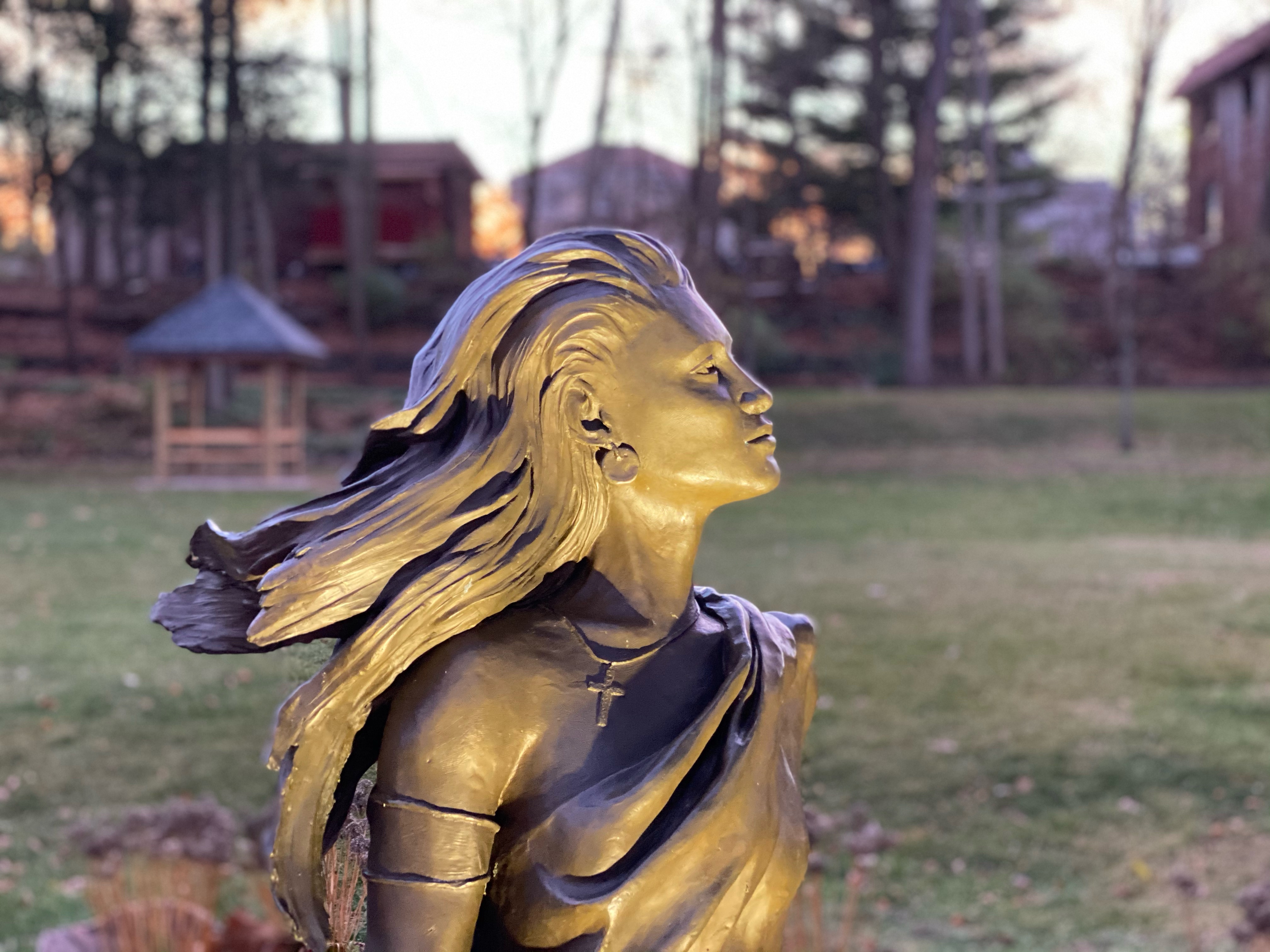
Winona Lake, Winona Drive, the Winona yearbook, and, two years ago, a Winona statue at Stock’s Park. Who is this “beautiful and brave young maiden,” as the plaque reads, and why should you care?
Over the last 200 years, Winona’s tale has become obscured; its narratives twist back and forth between fact and legend, reality and myth. Only a small part of Winona’s background is certain.
In the early 1800s, when Winona was born and raised, many authors who wrote about local natives, novelists and journalists alike, took literary agency in their descriptions. According to Dan Bisher’s book “Faded Memories,” which details pioneer and native history in Hillsdale County, this writing style frustrates attempts to solidify historical facts about Winona’s life.
Writers tended to mix fact with fiction based on local legends — so historical accounts about Winona should be taken with a grain of salt.
Chief Baw Beese, leader of a Potawatomi clan, whose name is preserved by Hillsdale’s famous lake, likely had many children with a few different wives. Winona’s mother, a French pioneer, died while giving birth to Winona. The plaque at Stock’s Park cites a 1934 issue of the Hillsdale Daily News: “Winona was the replica of her mother and the pride of her father’s heart.”
As the chief’s beloved daughter, Winona enjoyed a comfortable childhood. She was well-known in the community and, by the time she grew up, her beauty was something like local legend. “Descriptions of Winona create a haunting vision of a beautiful young woman with fair skin and bright eyes,” Bisher wrote, “a vague indication of mixed blood.”
Another story called Winona “the fairest maiden of the tribe, and the heart of every brave beat with inexpressible joy when her eyes were turned upon him. Slender and straight, with long, dark, slightly wavy hair, it is no wonder that the eyes of every brave followed her beautiful form as she went to the lake to fetch water every evening.”
Winona’s tragic end begins when she fell in love with a man named Ash-te-wette. Unfortunately, Ash-te-wette and Winona were cousins of some kind, but it isn’t known how closely they were related. Despite her feelings for Ash-te-wette, Winona was assigned to marry Negnaska, a member of the neighboring tribe, according to Bisher’s book. And so she did. On her wedding day, Chief Baw Beese gave Winona a beautiful, white pony (or cream-colored, depending on the source). Winona reportedly rode her pony around everywhere she went, showing off its majesty.
Negnaska, despite his luck marrying the beautiful maiden Winona, fell prey to alcoholism. Often, in his drunken rage, he would beat Winona. As a battered woman living with an alcoholic, Winona was already unsatisfied with her marriage.
Elizabeth Carter, a dear friend of Winona, wrote a letter to her grandmother back in England. “Thank you for the silver cross you sent to me and the one just like it for Wenona, (Wenona and Winona appear across different sources) my Indian friend,” she wrote. “I wear mine for best, but she wears hers all the time … It is always around her neck.”
Carter told her grandmother about Winona’s marriage as well, noting her unhappy marriage to Negnaska. “As a bridal gift, her father gave her a beautiful white pony, which she often rides over here, even when they are camping some miles away,” she wrote. “The pony is so intelligent, he seems almost human, and Wenona loves him as much as if he were.”
Negnaska’s problems caught up with him. He sold most of his possessions to fund his drinking habits. Eventually, Negnaska sold Winona’s precious pony to drink at Benaiah Jones’ (Jonesville’s founder) Fayette Inn, located on the corner of Water Street and Chicago Street — now home to Olivia’s Chop House and Saucy Dog’s Barbecue. According to Bisher, a different newspaper article reported this event happening in Fremont, Indiana.
Negnaska eventually paid the price. Winona found out her husband stole and sold her pony, and one night when Negnaska was particularly drunk, Winona couldn’t take it anymore: she stabbed and killed her thieving abuser.
Soon after, Winona was put on trial by her tribe — her father at the head of the tribunal — and sentenced to death. According to Bisher, native law followed an eye-for-an-eye doctrine, and was applied strictly. Not even Winona, the chief’s daughter, could escape it.
Winona was executed near either Fremont, Allen, or Camden, but the exact location is unclear. Her father, devastated at what he had done to Winona, buried her alone. He went almost unseen for several days after the execution, but some reports place him near Baw Beese Lake. Legend says he buried Winona two or three miles south of the lake in Cambria.
In 1902, according to Bisher, Flemming Daily, a respected farmer, constructed a barn on his property. He accidentally dug into a grave, bagged up all the contents he found, and took them to a local doctor. Daily found several artifacts with the remains that pointed to its being a native, and the doctor, after looking at the bones, confirmed this.
Among the artifacts was a silver cross — likely the one Carter’s grandmother sent to Winona. Based on this evidence, the doctor, familiar with local legend, declared the remains belong to Winona.
Soon after, Winona’s remains were put on display at Hillsdale High School for educational purposes. According to one story, students would draw on Winona’s bones with pencil, and the janitor grew tired of cleaning the display. He promptly threw what was left of Winona in the trash.

